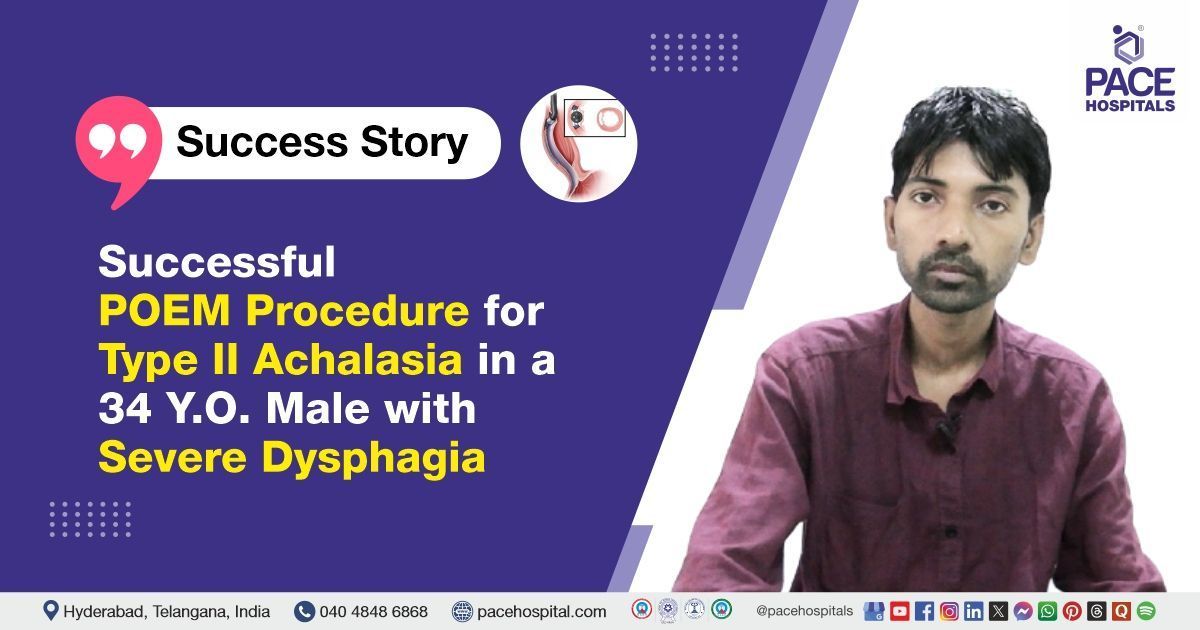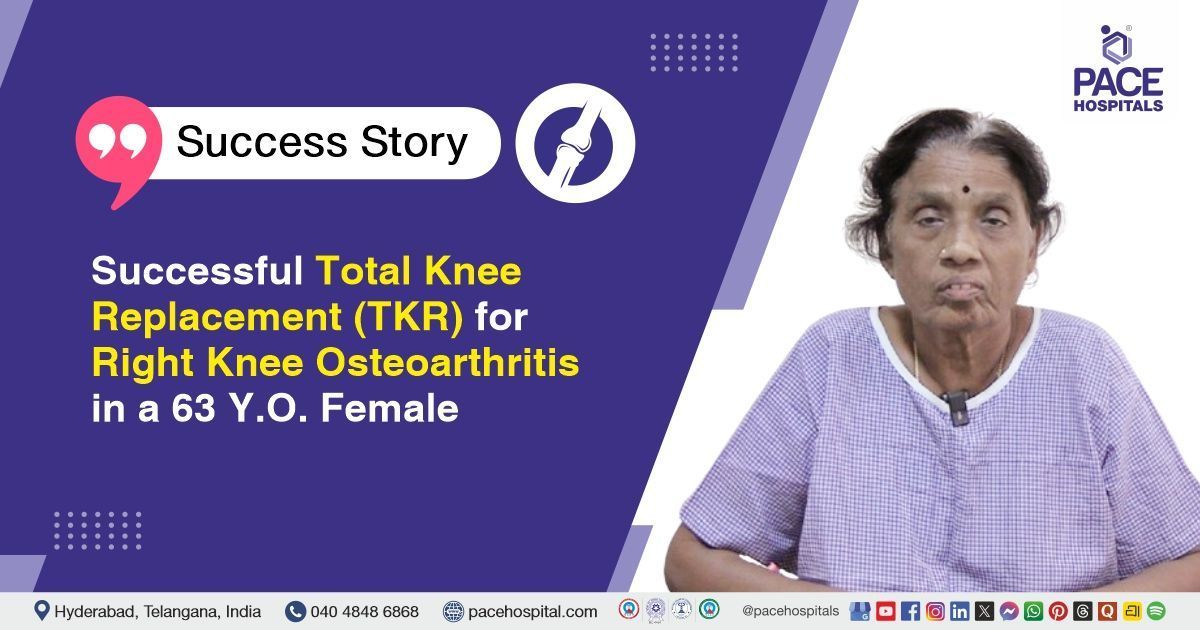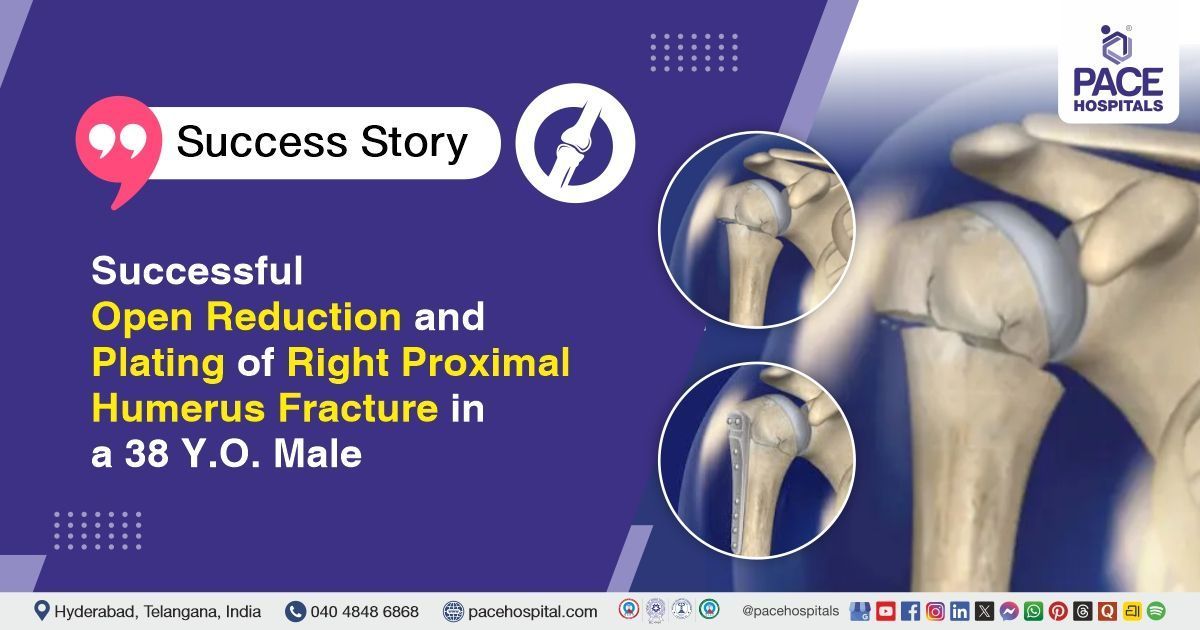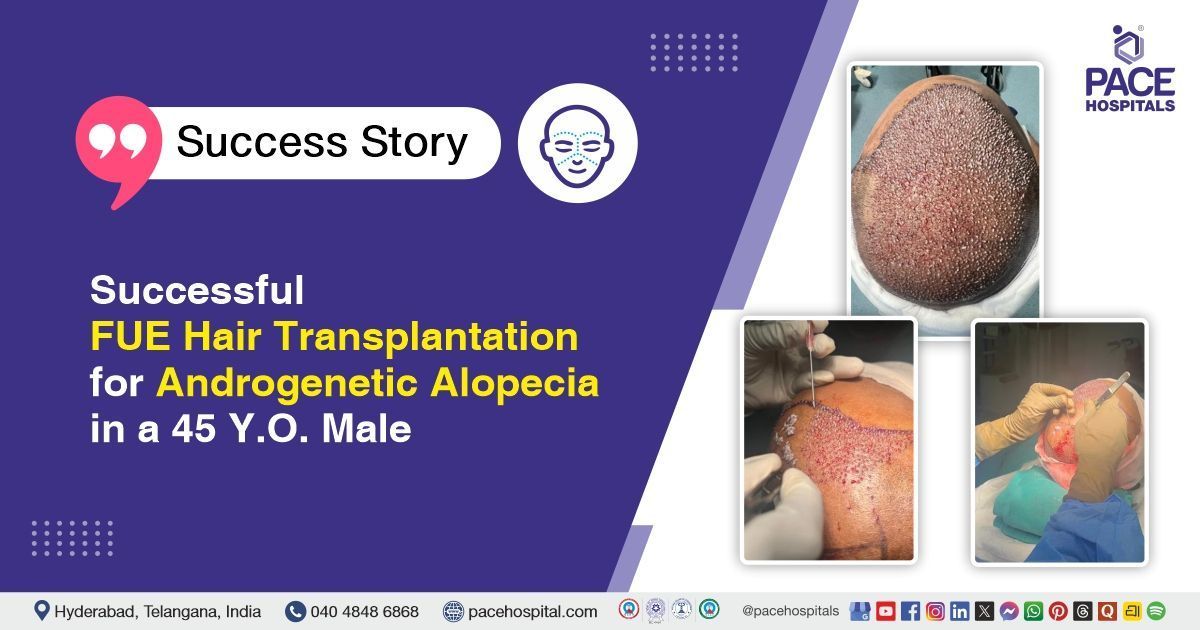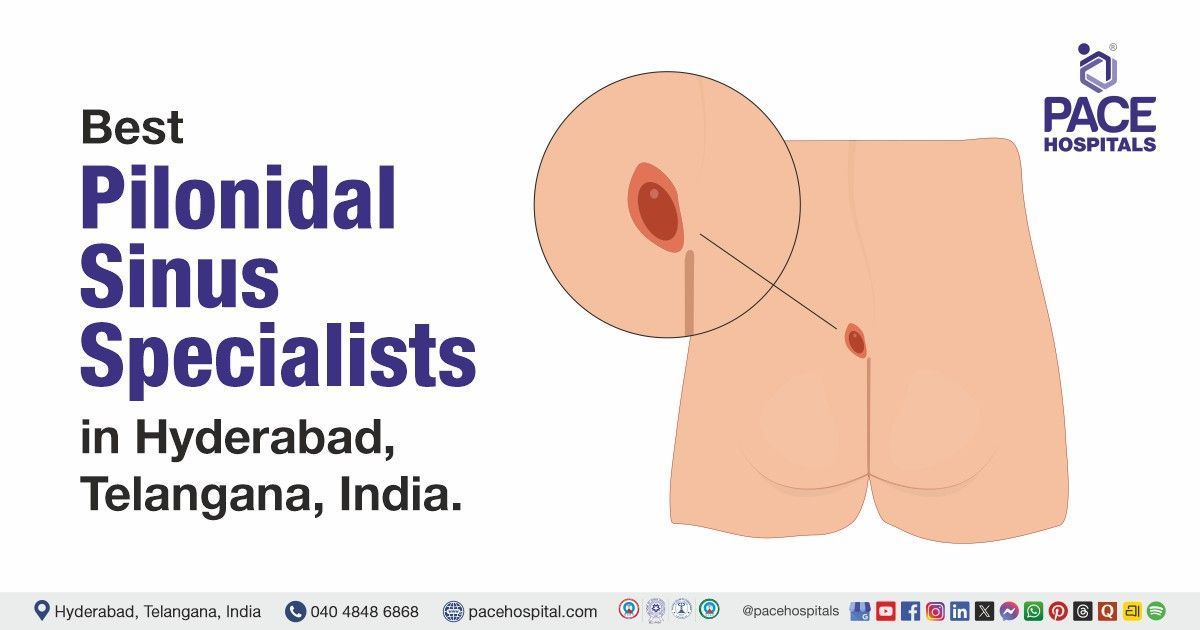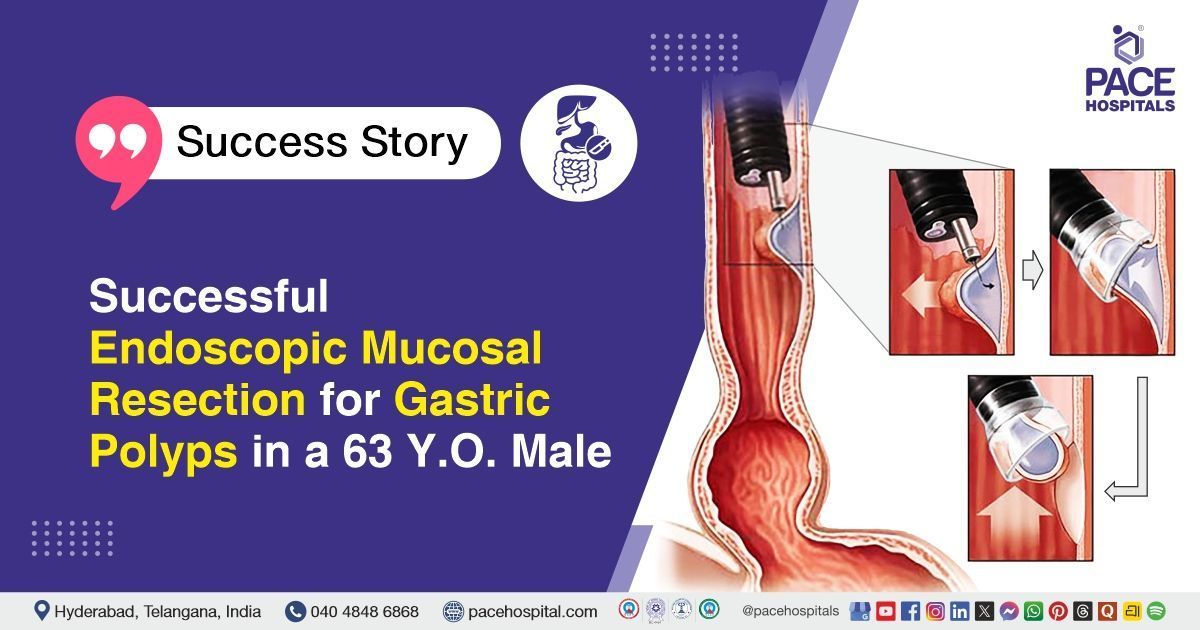Successful POEM Procedure for Type 2 Achalasia in a 34-Y.O Male with Severe Dysphagia
PACE Hospitals
The PACE Hospitals' expert gastroenterologist team successfully performed a Peroral Endoscopic Myotomy (POEM) on a 34-year-old male patient diagnosed with Achalasia Cardia Type II, with an Eckardt score of 7, indicating severe symptoms. He had presented with difficulty swallowing both solids and liquids, regurgitation, chest pain, and significant weight loss of 8-10 kgs over the past 2 years, with no relief from prior pneumatic dilation. The procedure resulted in a notable improvement in his swallowing ability and enhanced his overall functional recovery and quality of life.
Chief Complaints
A 34-year-old male with a
body mass index (BMI) of 15.2 presented to the Gastroenterology Department at
PACE Hospitals, Hitech City, Hyderabad, with chief complaints of difficulty swallowing both solids and liquids, regurgitation, chest pain and weight loss of approximately 8-10 kg over the past two years. His Eckardt score was 7, indicating severe symptom burden.
Past Medical History
The patient is a known case of achalasia cardia type 2 and had undergone pneumatic dilatation two years ago, which did not result in symptom relief. There are no other comorbidities reported.
On Examination
On physical examination, the patient was conscious, coherent and oriented with stable vital signs. A systemic examination, including an abdominal assessment, revealed a soft, non-tender abdomen with no palpable masses or signs of discomfort. There were no signs of acute gastrointestinal distress, which was consistent with his clinical stability, although his ongoing symptoms suggested an underlying issue that required further investigation.
Diagnosis
Upon admission to PACE Hospitals, the patient was thoroughly evaluated by the Gastroenterology team, which included a clinical examination and a 2-year history of progressive difficulty in swallowing, along with regurgitation, chest pain, and significant weight loss. There was a strong clinical suspicion of achalasia cardia, a primary esophageal motility disorder.
The patient underwent a comprehensive diagnostic evaluation for swallowing difficulty. Esophageal manometry showed increased lower esophageal sphincter (LES) basal pressure with incomplete relaxation on swallowing and panesophageal pressurisation, consistent with Type 2 Achalasia. A barium swallow study suggested achalasia, and upper GI endoscopy revealed antral gastritis. Routine blood tests showed mild thrombocytopenia and neutrophilia, while chest X-ray post-procedure revealed normal lung fields and heart size. 2D echocardiography showed normal cardiac structure and function.
Based on the confirmed diagnosis, the patient was advised to undergo
Achalasia Cardia Treatment in Hyderabad, India, under the expert care of the Gastroenterology Department.
Medical Decision Making
After a detailed consultation with the consultant gastroenterologists, Dr. Govind Verma, Dr. M. Sudhir, and Dr. Padma Priya, a comprehensive evaluation was carried out to determine the most suitable diagnostic and therapeutic approach for the patient. The gastroenterology team worked together to address the patient's complex clinical presentation, ensuring a tailored treatment plan specific to his condition. Based on their collective expertise and assessment, it was determined that Peroral Endoscopic Myotomy (POEM) was identified as the most effective intervention to relieve his symptoms.
The patient and his family were informed about his condition, the procedure, its associated risks, and its potential to alleviate symptoms and enhance his quality of life.
Surgical Procedure
Following the decision, the patient was scheduled for Peroral Endoscopic Myotomy (POEM) Surgery in Hyderabad at PACE Hospitals, under the expert care of the Gastroenterology Department.
The Peroral Endoscopic Myotomy (POEM) procedure was carried out in the following steps:
- Preparation and Anesthesia: The patient was given intravenous antibiotics and placed under short general anesthesia for the procedure.
- Mucosal Incision: Using an endoscope, the mucosa was stained with organic chloride salt at about 9 cm above the gastroesophageal (GE) junction at the 4 o'clock position, and a small mucosal incision was made with a T-type electrosurgical knife.
- Submucosal Tunneling: A tunnel was created between the mucosal and muscular layers, with coagulation of vessels to prevent bleeding, extending across the Lower Esophageal Sphincter (LES) into the proximal stomach.
- Muscle Myotomy: Circular muscle fibers of the distal esophagus and LES were carefully cut through the tunnel to relieve obstruction caused by achalasia.
- Closure and Final Check: The mucosal incision was closed using endoscopic clips, and the endoscope was passed through the GE junction to confirm free passage and no complications.
The surgery was successfully completed without any complications. Afterwards, the patient was closely monitored to support a stable recovery.
Postoperative Care
The postoperative recovery was uneventful, with no signs of infection or complications. The patient received intravenous fluids, antibiotics, gastric protectants, and supportive care to aid healing and prevent infection. A gastrograffin swallow study was performed, which revealed no contrast extravasation, and the contrast passed freely across the gastroesophageal (GE) junction.
The patient was then started on a liquid diet and monitored closely. After a stable recovery, the patient was discharged with detailed medical instructions for ongoing care and scheduled follow-up appointments.
Discharge Medications
Upon discharge, the patient was prescribed a course of oral antifungal medication to prevent any potential infection, proton pump inhibitors (PPIs) to reduce gastric acid secretion and additionally, a gastroprotective syrup was advised to soothe and protect the stomach lining, especially before meals. A topical ointment was recommended for application at the cannula insertion site to reduce any local inflammation or bruising. Detailed instructions on the medication regimen and potential side effects were provided to ensure proper adherence and optimal recovery.
Dietary Advice
The patient was advised to follow a liquid diet for one-week post-discharge, followed by a soft diet for the next three weeks to aid healing and ease swallowing. After this period, he may gradually resume a normal diet as tolerated. He was also advised to drink warm water after each meal and maintain an upright posture following a meal.
Emergency Care
The patient was informed to contact the emergency ward at PACE Hospitals in case of any emergency or development of symptoms like fever, abdominal pain, or vomiting.
Review and Follow-up Notes
The patient was advised to return for a follow-up visit after one month with the Gastroenterologist in Hyderabad at PACE Hospitals, to review his condition.
Conclusion
This case highlights the effectiveness of Peroral Endoscopic Myotomy (POEM) in managing achalasia cardia, leading to significant symptom relief and a marked improvement in the patient's quality of life.
Pneumatic Dilatation vs. POEM: Choosing the Right Path in Achalasia Management
Pneumatic dilatation is often used as an initial treatment for achalasia, aiming to reduce pressure at the lower esophageal sphincter (LES) by mechanically stretching it. While this method can offer short-term relief, its long-term effectiveness varies, and symptoms such as difficulty swallowing, regurgitation, and chest pain may return. Repeated dilatations also carry a higher risk of complications like esophageal perforation.
In such cases, the
gastroenterologist/gastroenterology doctor may recommend a more advanced and definitive approach. Peroral Endoscopic Myotomy (POEM) has emerged as a highly effective, minimally invasive procedure, particularly for patients with Type 2 achalasia or those who have not responded to conservative treatments. It provides significant symptom relief and improves overall quality of life.
Share on
Request an appointment
Fill in the appointment form or call us instantly to book a confirmed appointment with our super specialist at 04048486868

